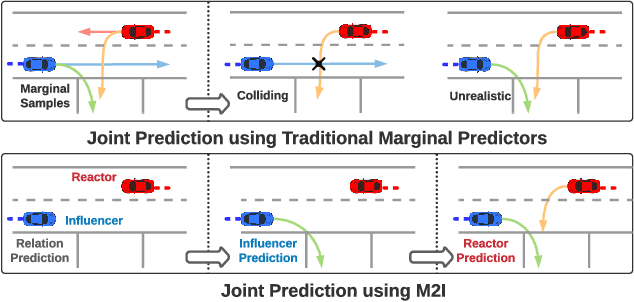M2I: From Factored Marginal Trajectory Prediction to Interactive Prediction
Paper and Code
Mar 28, 2022



Predicting future motions of road participants is an important task for driving autonomously in urban scenes. Existing models excel at predicting marginal trajectories for single agents, yet it remains an open question to jointly predict scene compliant trajectories over multiple agents. The challenge is due to exponentially increasing prediction space as a function of the number of agents. In this work, we exploit the underlying relations between interacting agents and decouple the joint prediction problem into marginal prediction problems. Our proposed approach M2I first classifies interacting agents as pairs of influencers and reactors, and then leverages a marginal prediction model and a conditional prediction model to predict trajectories for the influencers and reactors, respectively. The predictions from interacting agents are combined and selected according to their joint likelihoods. Experiments show that our simple but effective approach achieves state-of-the-art performance on the Waymo Open Motion Dataset interactive prediction benchmark.
 Add to Chrome
Add to Chrome Add to Firefox
Add to Firefox Add to Edge
Add to Edge